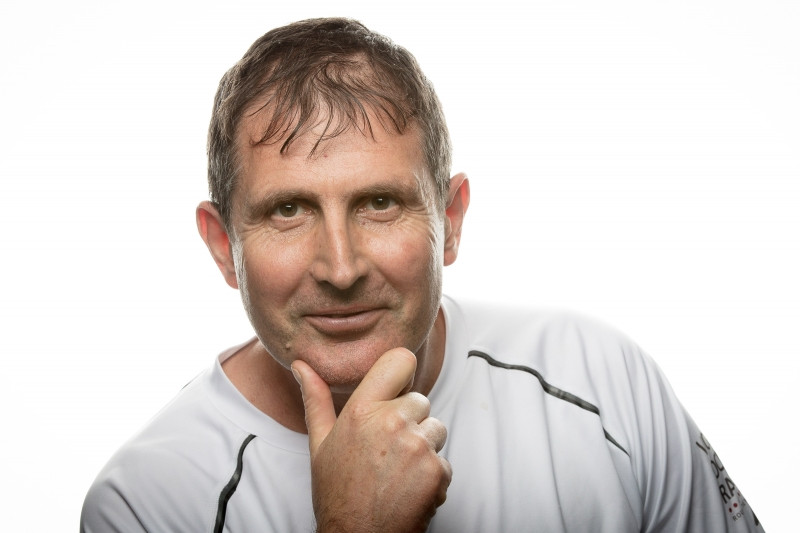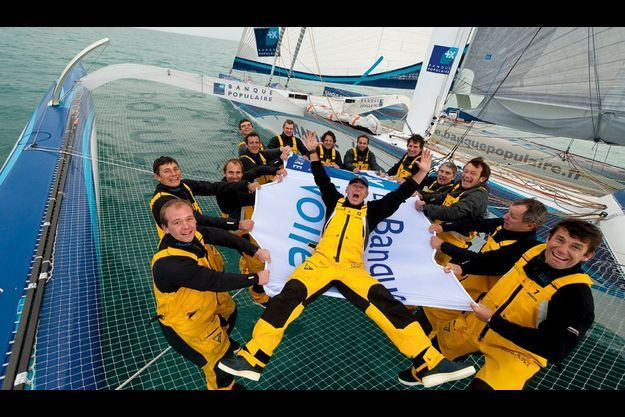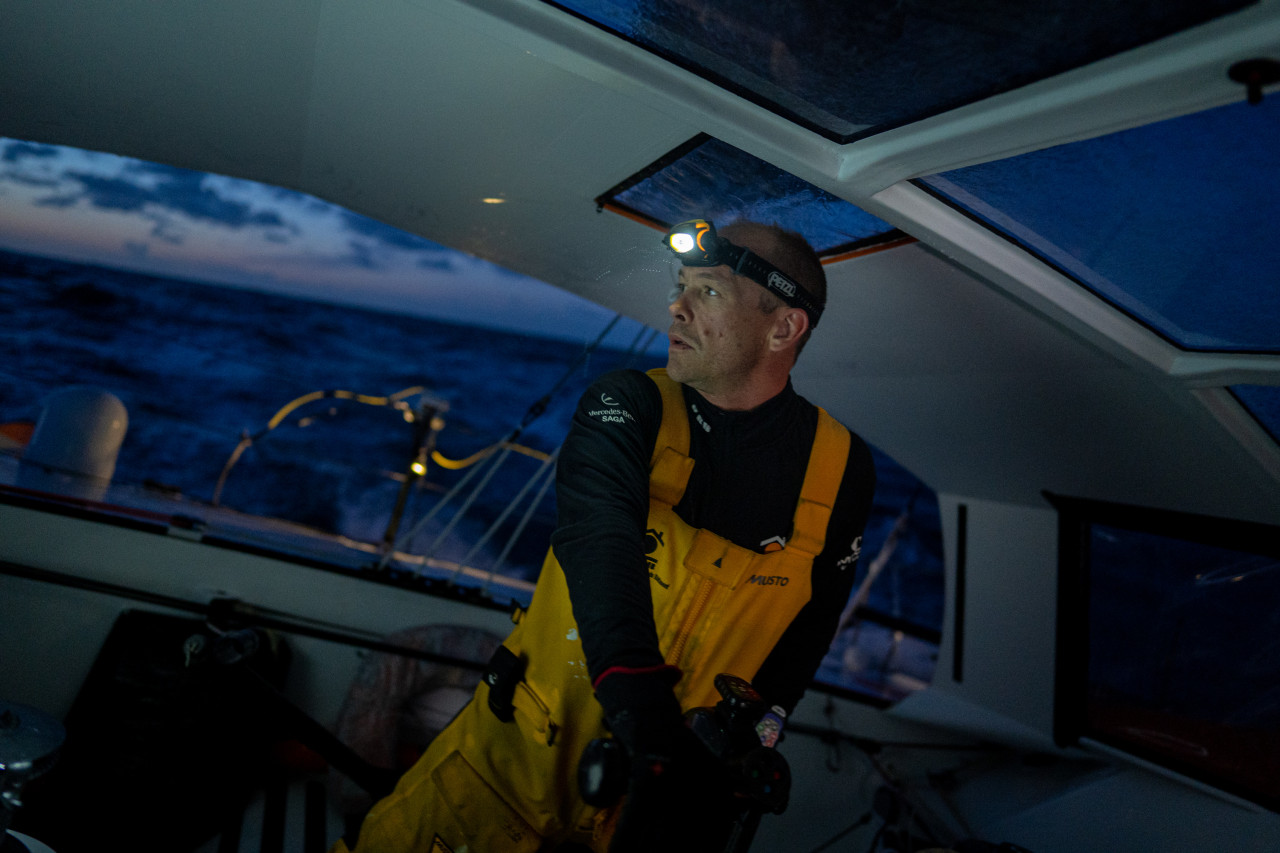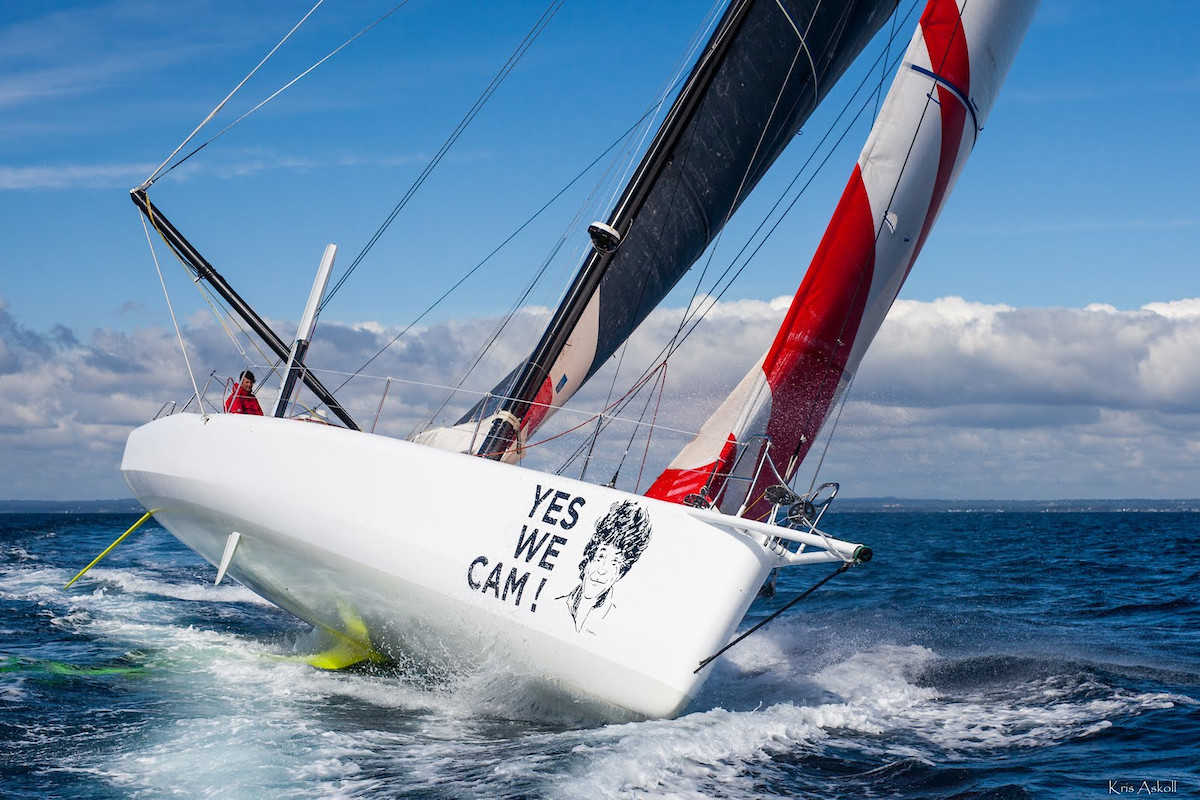Brian Thompson: Escoffier is among the best-equipped to react as fast as he did

Among those watching the drama unfold in the Southern Ocean, as Jean Le Cam rescued Kevin Escoffier, was British multihull specialist and solo sailor Brian Thompson who knows Escoffier very well.
The pair were part of Loïck Peyron’s crew on Banque Populaire V which set a new Jules Verne record in January 2012, and Thompson says Escoffier is among the best-equipped sailors in the sport to react with the speed that he did when PRB started to break up.

Image Paris Match
“I hadn’t expected the boat to have sunk so fast until this morning when Kevin was able to explain what happened,” Thompson told the IMOCA Class website. “It took seconds or minutes at most once the bow had broken off."
“But Kevin is one of the smartest guys and best sailors and he’s the strongest physically in the race, the most fit and hardy and the smartest engineering-wise. He’s also a logical thinker too. So, in this situation he had a huge number of plusses."
“If he had waited 20 seconds,”Thompson added, “he might not have been able to send that last text message to his shore team (informing them that he was abandoning ship) and then managed to get the liferaft out and get into the water. It must have been very, very hard.”
 © Yann Riou / polaRYSE
© Yann Riou / polaRYSE
Thompson is no stranger to structural issues in the bow of an IMOCA. During his own Vendée Globe race in 2008-09 his Bahrain Team Pindar developed cracks in its longitudinal beams which he had to repair at sea on his way to sixth overall.
The softy-spoken British sailor predicts all the Vendée Globe skippers will now be giving the bow sections of their boats a detailed inspection after the drama with PRB.
“One thing they will all be doing is checking the bows of the boats very carefully,”he said. “The shore teams and the architects are all going to be saying ‘go over it with a fine tooth-comb.’ Because you can sail for days without going up there, with the boat pounding along, and there might be a bit of water up there adding to the load.”
Thompson, who is racing on board the Jason Carroll-owned Mod 70, Argo, this week off the Florida coast, also pointed out that Escoffier was lucky this crisis occurred as early in the Southern Ocean as it did.
“What was good was that it was towards the beginning of the race in the Southern Ocean,” he said. “Everyone had been compressed by the high pressure moving across, so luckily Jean Le Cam was just 10 or 15 miles behind. Later on the boats could be 200 or 300 miles apart and that would have been a whole different outcome.”

Surveying the race as whole, Thompson has been gripped by the stories that have emerged so far – the setback for hot favourite, Jérémie Beyou, the retirements of Nicolas Troussel and Alex Thomson and now the rescue of Escoffier. “It’s been an epic event and we’ve barely got to Cape Town,” he said.
Like many sailors around the world, Thompson has been mightily impressed with Le Cam, but he also picked out Louis Burton on Bureau Vallée II who is lying third in the ranking, 260 miles behind race leader Charlie Dalin on Apivia, but also about 140 miles south of his track.
“I wouldn’t discount Burton in the south,” remarked Thompson. “He is way south, so he is steaming along having to do less miles down there. Like Le Cam, he has been out-performing his boat and he has been having an outstanding race.”
Thompson keeps a close eye on Formula One as well as sailing and his relief at Escoffier’s rescue reminded him of the good fortune of Romain Grosjean, the Haas-Ferrari driver who crashed in a fireball at the weekend at the Bahrain Grand Prix.
“I have to say the French are very lucky these last two days,” he said, “with Grosjean and then Kevin…I mean, unbelievable – never seen anything like it.”
Ed Gorman
Teams info
After a stunning 2025 season Sam Goodchild is the IMOCA Globe Series Champion for the second time
After a long season at the top of the IMOCA fleet that featured three race wins, Great Britain’s Sam Goodchild is for the second time in three years the IMOCA Globe Series Champion.
•••Quel rôle peut jouer la course au large dans la transformation du transport international ? Avec Pie…
Pour ce 10ᵉ épisode de Transitions, enregistré au Havre lors du départ de la Transat Café L'Or, nous recevons Jeremy Pochman, PDG de 11th Hour Racing, et Pierre-Antoine Morvan, responsable du pôle course au large et supe…
•••